- Submissions

Full Text
Determinations in Nanomedicine & Nanotechnology
Protecting the Environment from Waste. Development of a New Drug Delivery Biopolymer for Obtaining Hyaluronic Acid from Rooster Comb
Mehraliyeva Sevil Jabrayil*
Department of Pharmaceutical Technology and Management, Azerbaijan Medical University, Azerbaijan
*Corresponding author:Mehraliyeva Sevil Jabrayil, Department of Pharmaceutical Technology and Management, Azerbaijan Medical University, Azerbaijan
Submission: August 27, 2024;Published: September 23, 2024
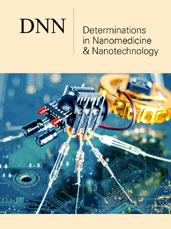
ISSN: 2832-4439 Volume3 Issue 3
Preparing programs for the ecological balance of the environment and various fields of nature use is considered a priority issue in our country as well as in the whole world. One of the reasons that have a negative impact on the environment is the disposal of waste from poultry farms in various ways. Taking into account this problem, we have developed a method of extracting hyaluronic acid, which is important for medicine and cosmetology, from the combs of roosters, which are discarded as waste after meat processing. In the scientific research laboratory of the Department of Pharmaceutical Technology and Management of the Azerbaijan Medical University, optimal technological parameters were developed to release hyaluronic acid in the maximum amount from rooster combs. As a result of the experiment, it was found that the degree of fineness of the raw material is 1mm, the number of extractions is 2 times, the extractant is 2% NaHCO3, extraction conditions - 80 °C, extraction time - 30 minutes, precipitation agent - 2% citric acid, yield percentage is 4.87-4.89%. We prepared a 1% solution of extracted HA based on optimal parameters, and some quality criteria were evaluated at the Analytical Expertise Center of the Ministry of Health of the Republic of Azerbaijan. It was determined that the pH of the solution is 7.65. The presence of Hyaluronic acid was determined by spectrophotometric method (280nm max. absorption in UV-light, optical density 0.441). The solubility of hyaluronic acid was tested and found that HA was gradually but completely dissolved in water, forming a viscous, colorless, slightly opalescent gel. Taking into account the protection of the environment from waste, as a scientific researcher, I believe that the reprocessing of slaughtered rooster heads in poultry enterprises will, on the one hand, promote the prevention of environmental pollution and, on the other hand, the implementation of the production process of hyaluronic acid, which has a positive effect on human health.
Keywords:Environmental protection; Rooster comb; Optimal technology parameters; Hyaluronic acid; Extraction
Introduction
In the new millennium, preservation of ecological balance, rational use of natural resources, protection of water, soil and atmospheric air from pollution has become a universal problem. In addition to demographic growth in the world, the sharp increase in consumption, global warming, damage to the ozone layer, and depletion of natural resources have also had an impact on thinking and activities related to the environment. The purpose of the regulation of the ecological balance of the environment is to determine the scientifically based norms of permissible impact on the environment that guarantee the protection of ecological safety and public health, ensure the efficient use and restoration of natural resources, and the prevention of environmental pollution. To regulate the degree of disruption of the ecological balance of the environment: determination of the harmful effect of environmental quality indicators on human health, efficient use, protection and restoration of natural resources; Refers to the determination of the limit of the permissible level of harmful effects on the environment [1,2]. One of the factors affecting the environmental pollution is the question of the destruction of the heads of roosters processed for meat in poultry factories in various ways. By using these wastes, the production of natural origin (biopolymer) hyaluronic acid, which is used in the preparation of various cosmetic and medicinal products with antimicrobial, antiinflammatory, anti-aging and prolonging effects, will help to solve the current problem. Hyaluronic Acid (HA) is widely distributed in body tissue. It is one of the important components of connective tissue, intra-articular fluid (synovial), vitreous body of the eye. HA is mostly accumulated in egg cell, bone, heart valve, muscle tissue, brain and skin. During arthrosis, HA in the joint decreases 2-3 times than normal. This, in turn, leads to increased friction of the joint and degenerative processes in the joint cartilage. Studies show that treatment with hyaluronic acid prevents the progressive dystrophy of the cartilage, lowers the percentage of disability and can extend the time of endoprosthesis surgery for a long time. Also, if we explain the role of hyaluronic acid from a cosmetic point of view, it is clear that HA enhances the synthesis of collagen and elastin in cells and fibers. Thanks to the introduction of these substances into the skin, it becomes more elastic and firm. HA reduction occurs in many cases: During age changes (in 50-year-old persons, its amount decreases by 2 times); When the lipid layer in the stratum corneum is damaged; UV damage; in stresses, etc. In this regard, not only the upper layer of the skin, but also the dermis is damaged [3,4].
When the dermal layer of the skin dries, the quantity and quality of the aqueous gel of glycosaminoglycan decreases, scattered collagen fibers accumulate, elastin thins, and more moisture is lost. The process of premature aging of the skin occurs. Facial skin sagging, loss of elasticity, and formation of wrinkles occur. Let’s note that natural sources that influence the production of hyaluronic acid in the body: Soy products, especially soy milk, red deer, rooster and chicken skin, sweet potato “tamaji” grown in Japan, horsetail root, IGB joints and cartilage, etc. For many years in world practice, the source rich in HA are considered to be the red poop of roosters. In general, glycosaminoglycans (previously called “mucopolysaccharides”) are included in the composition of the intercellular substance of connective tissue. Together with collagen and elastin fibers, it forms the matrix, the main component of the intercellular substance of the connective tissue of the skin. This, in turn, is hyaluronic acid, which is an important and main part of glycosaminoglycans.
Hyaluronic acid is processed in the body in special cells - fibroblasts. In humans, at a young age, the function of fibroblasts is more active, and sufficient amounts of HA are produced. But when approaching the age of 30, its production begins to decrease gradually. Therefore, after the age of 30, the increase in intraocular pressure, disruption of the communication between the cells located on the upper surface and deep layers of the skin, and wrinkles of the skin are evident. Even loss of pink skin is observed. Hyaluronic acid is associated with water in the intercellular spaces, increasing the resistance to tissue compression. One HA molecule can hold 500 to 1000 molecules of water around it. 1g of HA can absorb 6 liters of water. Also, HA participates in the distribution of water in body tissue, performs barrier and protective functions.
Regulates intraocular pressure and affects the quality of intraarticular fluid. HA, produced in Japan, affects the formation of elastin and collagen in the skin, preventing the skin from peeling. HA is gradually absorbed, and the collagen framework remains in the skin, ensuring its elasticity and non-flaking for a long time. HA has a rejuvenating property due to the formation of the inner frame. In addition to these, HA has a major drawback. Thus, the size of one of its molecules is 2-3 times larger than the average size of a human cell. It is 13.8 times larger than intercellular spaces.
In 2002, Japanese scientist Koichi Tanaka received the Nobel Prize for structural analysis of biological macromolecules. To put it simply, he was blessed with the creation of low molecular weight HA, which has the ability to penetrate into the deeper layers of the skin, its framework ensures the retention of moisture in the intercellular spaces. When hyaluronic acid enters the body, it is broken down by the action of the hyaluronidase enzyme, which makes it soluble. This leads to a decrease in the effect of HA and the emergence of unwanted effects. This deficiency was overcome by Japanese scientists by reducing its molecular weight. The concentration of the gel is 3.5%, and in synthetic HA it is 0.5-1%. One of the positive aspects of Japanese HA is that it improves cerebral circulation when applied to the skin. In this sequence, hair growth improves and graying decreases. Another advantage is that this HA accumulates in the skin and is gradually consumed, which explains why it has a long-lasting effect (Figure 1).
Figure 1:Penetration of high and low molecular hyaluronic acid.

The structure of hyaluronic acid was determined in 1934 by Carla Meyer and J Palmer. For the first time, they succeeded in separating hyaluronic acid from the vitreous body of the eye in laboratory conditions. The word hyaluronan is also derived from the Greek hyalos-glass-like and uronic acid. Uronic acid (glucuronic acid) is a monocarboxylic acid with the general formula OHC2[CH(OH)]nCOOH. It is included in the composition of plant and animal biopolymers or polysaccharides (hyaluronic acid, collagen, chitra, heparin, etc.). HA-Poly-(2-Acetamido-2-Deoxy-D-Gluco)-Dglucuronoglycan is a polymer consisting of D-N-acetylglucosamine residues of D-glucuronic acid. This, in turn, is connected by β-1,4- and β-1,3 glycosidic bonds (Figure 2). There are up to 25,000 such disaccharides in the HA molecule. Natural HA molecular weight ranges from 5000 to 20,000,000Da. The average molecular weight of the polymer in human synovial fluid is 3,140,000Da. HA undergoes enzymatic degradation by 3 types of enzymes: Hyaluronidase, -D-glucuronidase, and -N-Acetyl-Hexosamidase. In the body, these enzymes are distributed in various forms inside the cells and in the blood serum. Hyaluronidase cleaves high-molecular hyaluronic acid into relatively small-molecular oligosaccharides, while -D-Glucuronidase and -N-Acetyl-Hexosamidase expose these oligosaccharide enzymes to further degradation by removing terminal sugars [5-10].
Figure 2:Hyaluronic acid.

Hyaluronic Acid (HA), one of the main components of the Extracellular Matrix (ECM), is extensively used in the design of hydrogels and nanoparticles for different biomedical applications due to its critical role in vivo, degradability by endogenous enzymes, and absence of immunogenicity. HA-based hydrogels and nanoparticles have been developed by utilizing different crosslinking chemistries. The development of such crosslinking chemistries indicates that even subtle differences in the structure of reactive groups or the procedure of crosslinking may have a profound impact on the intended mechanical, physical and biological outcomes. There are widespread examples of modified HA polymers that can form either covalently or physically crosslinked biomaterials (Figure 3). More recently, studies have been focused on dynamic covalent crosslinked HA-based biomaterials since these types of crosslinking allow the preparation of dynamic structures with the ability to form in situ, be injectable, and have self-healing properties. In this review, HA-based hydrogels and nanomaterials that are crosslinked by Dynamic-Dovalent Doupling (DCC) chemistry have been critically assessed [11,12].
HA is necessary for the formation of intercellular substances. It manifests itself in the division of these cells, the entry of nutrients into them, and the secretion of vital products. Almost half of all HA in the body accumulates in the skin. Here, it plays the role of a natural complement between skin elements-collagen and elastin fibers, participates in their synthesis. Also, HA affects the wound healing process, affects the immune response, blocks the effect of free radicals in the cell, and prevents premature aging of tissues. A 1% aqueous solution of HA is not a liquid, but a viscous gel. Since hyaluronic acid is present in many tissues (skin, cartilage, vitreous body), in the treatment of diseases related to these tissues (cataract, osteoarthritis): Synovial fluid endoprosthesis; Ophthalmological operations in the field of surgery; Preparations for light tissue augmentation and wrinkle filling in cosmetic surgery (including in the form of intradermal injections). According to the scientific prediction of Khaif University researchers, hyaluronic acid will have a therapeutic effect by forming the basis of new effective anticancer drugs.
Figure 3:The schematic representative of HA chemical structure and hydrogels developed by different crosslinking chemistries.

In medicine, since HA has antimicrobial and regenerative effects, various preparations have been developed based on it for the effective therapy of skin lesions. Those preparations are mainly anti-burn, actively involved in the therapy of trophic disorders of the skin epithelium. It was determined that HA with a low molecular mass (below 10kDa) has an angiogenic effect. At this time, the formation of spikes decreases and connective tissue develops, microcirculation improves, and the inflammatory effect decreases. HA has anti-inflammatory activity. Enhances migration and proliferation of fibroblasts in epithelial cells. HA improves microcirculation, which is explained by its anti-inflammatory effect. It has antimicrobial activity on wound surface and skin covering by activating bactericidal factors. HA shows antitoxic activity by lowering endogenous intoxication indicators. Hyaluronate has the ability to increase the activity of interferon, which is reflected in the antiviral effect. It has been proven that preparations made on the basis of HA have high activity against the herpes virus. According to some reports, HA with high molecular weight dissolves other biologically active substances and ensures their long-term effect. Due to the high viscosity of HA, drugs are released in the tissue for a long time. This is called a depot, from where biologically active substances are gradually diffused into the body. This increases the therapeutic range of medicinal substances, reduces side effects, and also expands the possibilities of using the combination of other medicinal substances (steroid preparations, antibiotics, peptides, etc.) with HA. Hyaluronate is widely used in surgery. At the same time, HA has antioxidant and hemostatic properties.
It is known that the area where HA is more widely used is the correction of aging skin, the restoration of elasticity, moisture and elasticity, and the elimination of dryness and wrinkles. HA preparations are used in cosmetology and aesthetic surgery to restore beauty and youth to the skin. One of the popular application areas of HA is its contour plastic and mesotherapy. Manufacturers of cosmetic products produce eye gel, lip balm, and anti-aging products from HA salts. Hyaluronic acid is not considered a foreign substance for the body, preparations based on it are considered hypoallergenic. Both natural and synthetic types of HA are used in cosmetology. Its metabolism is very active (the HA molecule lives in the body for 2-3 days, then it breaks down and the cells synthesize a new one)” And it takes a lot of time to break down in the body. Hyaluronic acid plays a moisturizing role in products for external use (cream, emulsion, lotion, etc.). A thin layer formed on the surface of the skin can retain moisture during excessive evaporation. Therefore, the pores of the skin are not blocked, the gas exchange of the skin is not disturbed, and other active substances from the medicine included in the composition are ensured to pass to deeper layers. However, HA applied to the surface of the skin does not penetrate into its deep layers and provides short-term hydration on the surface. During deep and long-term moisturizing, the bio revitalization method is used to inject HA into the deep layers of the skin, it is applied in wrinkles, increasing the volume of the lip. Taking into account the properties of HA, the penetration of other substances into cells in the preparations used for mesotherapy is also improved. Hyaluronic acid is used not only in cosmetology, but also in many fields of medicine, including medicine: ophthalmology, cardiology, transplant ology, surgery, etc. widely used [13,14].
Preparations containing hyaluronate mainly have local antiinflammatory, wound-healing, immune stimulating effects. It has the ability to store water in the intercellular spaces, the main mechanism of which is the deformation of the skin due to age. Currently, in cosmetology practice, 1-3% solutions of HA are applied by injecting internally and subcutaneously. Injection of HA into the epithelium in the form of an aqueous gel ensures the elasticity and firmness of the tissue, giving the skin its previous quality and beauty. At the same time, HA is widely used in the preparation of various combined creams and gels. Due to the effect of injection, the skin’s rheological properties are restored, which eliminates wrinkles and acne. According to the information of the agency, 13 brands of prostheses containing synovial fluid were brought to the country. Leader Farmatron, HyalTech, company is traditionally in the 1st place; 2nd place - hyaluron “Rompharm” company; Sinvisk “Sanofi” company is in the 3rd place. According to experts, the reason for this increase is as follows: According to statistical data, musculoskeletal diseases occupy one of the leading places, and they cover all age groups. This leads to early disability. According to the information provided by analytical agencies, the importation of prostheses containing synovial fluid for intra-articular injection has increased twice over the last 6 years. Although the prices are very high, the demand for intra-articular HA-containing injections used in arthrosis is steadily increasing. The sales channel of these tools is diverse: Pharmacy segments make up 40%. The multifaceted properties of cosmetic products containing hyaluronic acid lead to an increase in its quantity among patients on the pharmaceutical market, creating a demand for it. Accordingly, we find HA in various cosmetic products produced by manufacturers, including serums, masks, tonics, cleansers, drops, lotions for dry skin, creams for dermatitis, burns, moisturizing creams for Vichy skin, vitamin cocktails [5-9,13,15].
Taking into account the relevance of the above, the aim of the present study is to develop a technology for obtaining HA from a natural source for the production of soft pharmaceutical forms. The analysis of scientific literature materials showed that hyaluronic acid, used for medical and cosmetic purposes, has been of interest to various researchers since 1934 until today. Hyaluronic acid is mainly obtained from fish fins, rooster beaks, and in modern times, from microorganisms rich in polysaccharides. In the performance of each research work, the point that scientists thought about was the high yield percentage of hyaluronic acid, its maximum purity, and the provision of a long-term effect. For this purpose, scientists from different countries use purified water, water with NaCl, isopropyl alcohol, butyl alcohol as solvents in the purchase of HA; 95 or 96% alcohols are used as a precipitating agent, and recent literature reports use 1-2% acetic acid solution [4,5].
At the same time, in the extraction of all raw materials in the acquisition of HA, the fineness degree and temperature regime, which are important factors for the separation of BAS, were important. Also, processing of raw materials with enzyme preparation collagenase, pancreatin or without their participation was carried out in the stage of aqueous extraction. During the analysis of literature data, it became clear that to achieve a 55% yield of HA, it is more convenient to apply ultrasound with a frequency of 16-29kHs, which is quick and easy to use. In some literature data, after washing the raw material several times with ethanol and extracting it with water, its filtration, centrifugation and lyophilization are indicated. In this method, some researchers do not use 95 or 96% ethanol as a precipitant in their work, and in other studies, the lower phase is separated and treated with ethanol after centrifugation and precipitation of HA is noted [6-10].
Materials and Methods of Research
In order to obtain hyaluronic acid, which can be used in the preparation of cosmetic products as a semi-finished product, the cut and discarded combs of chickens, which are food products, were chosen as the research object. To separate the biopolymer, the following technological operations should be performed: crushing of raw materials, homogenization, extraction, chemical denaturation, centrifugation, filtration, sedimentation to purify the biopolymer. Various solvents were used in the extraction process: 96% ethanol, 1-2% NaHCO3 solution, n-butanol, 1-2% citric acid, purified water. Some physico-chemical properties of HA obtained as a result of determination of optimal technological parameters, determination of pH were determined based on the appropriate methodology in XIII RP [16,17].
Discussion of Result
Figure 4:Stages of extraction of hyaluronic acid from rooster comb.

TP (technological process). The combs of roosters (15 months old) was first washed with cold running water. Then, it was treated with water at a temperature of 80 °C for 30 minutes. 500g of raw materials were weighed and crushed in a homogenizer and placed in a container with a capacity of 5 liters. 2.5 liters of 2% NaHCO3 solution was added to it, mixed well and extraction was carried out at 80 °C for 30min. The lipid layer formed on the surface was collected, the extract was cooled together with the raw materials, filtered through 4-fold filtration. The raw material was compressed and combined with the previous filtrate. The pressed raw materials were added to the vessel again, the extraction process was carried out for the 2nd time, 2 liters of 2% NaHCO3 solution was added to the residue, mixed well and extraction was carried out at 80-90 °C for 30 minutes. The lipid layer formed on the surface was collected, the container was cooled and filtered through a 4-fold filter, the raw mass was compressed and combined with the previous one. The filtrates from both extraction processes were combined. Then, 50- 60ml of 1% citric acid solution was added to it until pH4.5, and the solution was kept for 20 hours to ensure complete precipitation of HA. The precipitated mass was separated and purified water was added in a ratio of 1:3, mixed carefully, 0.1% sodium hydroxide solution was added until the pH was 7.0-7.5, heated to 80 °C and filtered. The filtrate was lyophilized, resulting in the formation of a white powder. The technological process reflecting the purchase of HA was carried out on 4 samples. The results are given in Figure 4 & Table 1.
Table 1:The amount of HA depending on the factors affecting the extraction process for different samples.

As can be seen from the table, the yield of HA was 4.87% when the extractant was 2% NaHCO3 and the precipitating agent was 2% citric acid. Taking this into account, further studies were carried out by extraction using 2% NaHCO3 to determine the optimal parameters. Depending on the number of the extraction process, the optimal number of extractions for the maximum separation of HA was determined. The results are given in Table 2. As can be seen from the table, the amount of HA is greater when the extraction is performed twice. There was a slight change in the amount of HA during the 3rd extraction. Extraction was performed depending on the concentration of NaHCO3 used as the optimal extractant and the maximum amount of HA was calculated. The results are shown in Figure 5. As can be seen from (Figure 1), the maximum amount of HA obtained during extraction with 2% NaHCO3 solution is 4.87%.
Table 2:Determining the optimal number of extractions for the maximum separation of HA.

Figure 5:Percentage of HA yield depending on the concentration of NaHCO3 solution.

In order to determine the optimal degree of fineness, the extraction process was carried out considering different degrees of fineness (0.5mm, 1mm, 2mm, 3mm, 4mm, 5mm). The obtained results are given in Figure 6. During the conducted experiments, it was determined that the optimal fineness of the raw material is 1mm. Although the amount of HA at 0.5mm fineness is 4.95%, the screening step was very difficult. After that, the extraction process was carried out for different durations (10min, 15min, 20min, 25min, 30min, 35min, 40min, 45min, 50min, 60min) to determine the optimal extraction time, and the results are shown in Figure 7 has been presented. As can be seen from diagram No. 3, the maximum amount of HA occurred within 30 minutes and was 4.88%. There was no significant change in the amount of HA in the following periods. In order to determine the optimal extraction conditions, the extraction process was carried out considering different temperature regimes (30 °C, 40 °C, 50 °C, 60 °C, 70 °C, 80 °C, 90 °C, 100 °C). The obtained results are given in Figure 8. As can be seen from the diagram, the maximum amount of HA occurs when the temperature regime is 80 °C, which is 4.87-4.88%. When the extraction process is carried out at 100 °C, HA undergoes a chemical change and its quantity decreases.
Figure 6:HA yield percentage depending on the degree of fineness of the raw material.

Figure 7:HA yield percentage as a function of extraction time.

Figure 8:HA yield percentage depending on the extraction conditions.

A 1% solution of HA obtained on the basis of optimal parameters was prepared and some quality criteria were evaluated in the laboratory of the Analytical Expertise Center. The pH level of the solution was measured in a potentiometer (pH=7.65) and the presence of hyaluronic acid was determined in a spectrophotometer (max. absorption in UV-light at 280nm, optical density 0.441). At the same time, the solubility of hyaluronic acid was also tested and it was determined that HA gradually but completely dissolved in water, forming a viscous, colorless, slightly opalescent 1% gel.
Conclusion
Prevention of environmental pollution is a global problem. Both the food industry and the pharmaceutical industry’s waste generated after the initial processing of raw materials of plant, animal, and mineral origin have a negative impact on the environment and human health. The reprocessing of this waste will help to prevent the current problem. From this point of view, the extraction of the waste generated after the primary processing in the poultry factories, which is the research object of the article in question, the extraction of roosters’ beaks and the method of obtaining a useful biopolymer, hyaluronic acid, which ensures the delivery of the drug to the target, is considered a priority issue in the globalized world. Solving this problem will also allow the production of hyaluronic acid, which is widely used in medicine and cosmetology, in local pharmaceutical plants.
References
- Law of the republic of Azerbaijan on environmental protection
- (2024) EPA publishes its 2024-2027 climate adaptation plan. EPA United States Environmental Protection Agency.
- Bozabaev BU (2013) Method of treatment of deforming arthrosis of the knee joints.
- GD Prestwich (2001) Biomaterials from chemically-modified hyaluronan. Glycoforum 5: A4.
- Kendra W, Brandon MB, Amandeep G, Patrick MZ (2023) Hyaluronic acid. StatPearls Publishing LLC, Treasure Island, Florida, USA.
- Sachin SK, Shital DP, Deepali GC (2018) Extraction, purification and characterization of hyaluronic acid from Rooster comb. Journal of Applied and Natural Science 10(1): 313-315.
- Claudia SR, Tovar AF, Paulo M, Ricardo P, Pedro B, et al. (2012) Purification and characterization of hyaluronic acid from chicken combs. Rural Science 42(9): 1682-1687.
- Mukhtarov EI, Tulupova GB, Gromov IY (1992) Method for obtaining hyaluronic acid preparation text, Patent 2055079, Russia.
- Antipova LV, Polyanskikh SV (2022) Method for obtaining hyaluronic acid text, Patent 2186786, Russia.
- Radaeva IF, Kostina GA (1998) Method for obtaining hyaluronic acid text, Patent 2102400, Russia.
- Shujiang W, Shima T, Rohith PP, Nawale GN, Oommen PO, et al. (2022) Dynamic covalent crosslinked hyaluronic acid hydrogels and nanomaterials for biomedical applications. Biomaterials Science 10: 6399-6412.
- Prestwich GD, Luo Y, Kirker KR (2000) Cross-linked hyaluronic acid hydrogel films: New biomaterials for drug delivery. J Controlled Release 69(1): 169-184.
- Fedorishchev IA (1999) The use of domestic preparations of hyaluronic acid in therapeutic and prophylactic cosmetology. In: Samoilenko II, Lebedeva EM, Fedorishchev IA (Eds.), Materials of the International Scientific and Practical Conference Advanced Technologies in Aesthetic Dermatology and Plastic Surgery. Moscow, Russia, pp. 44-45.
- Buckley C, Emma JM, Therese RM, Major I (2022) Hyaluronic acid: A Review of the drug delivery capabilities of this naturally occurring polysaccharide. Polymers (Basel) 14(17): 3442.
- Khabarov VN, Boykov PY, Selyanin MA (2012) Hyaluronic acid: Production, properties, application in biology and medicine M: Practical Medicine, p. 224.
- State Pharmacopoeia of the Russian Federation. XIII (edn), Russia.
- Chen L, Shaopu L, Hongqun L, Xiaoli H (2014) Spectrophotometric method for the determination of sodium hyaluronate with basic bisphenylnaphthylmethane dyes. Journal of Chemical and Pharmaceutical Research 6(6): 1695-1698.
© 2024 Mehraliyeva Sevil Jabrayil*. This is an open access article distributed under the terms of the Creative Commons Attribution License , which permits unrestricted use, distribution, and build upon your work non-commercially.
 a Creative Commons Attribution 4.0 International License. Based on a work at www.crimsonpublishers.com.
Best viewed in
a Creative Commons Attribution 4.0 International License. Based on a work at www.crimsonpublishers.com.
Best viewed in 




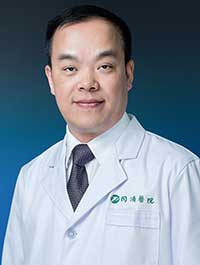


.jpg)


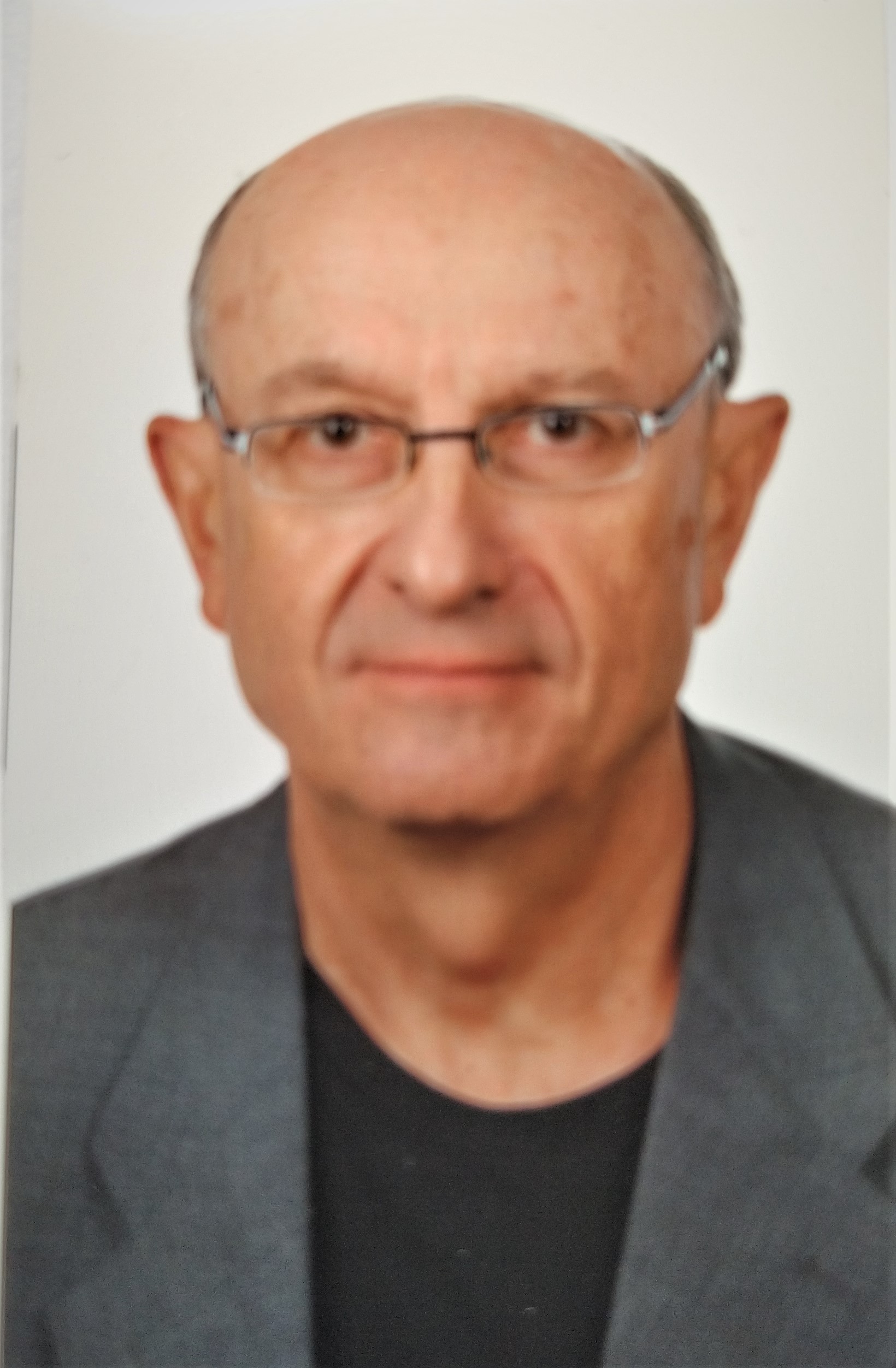
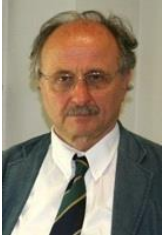


























 Editorial Board Registrations
Editorial Board Registrations Submit your Article
Submit your Article Refer a Friend
Refer a Friend Advertise With Us
Advertise With Us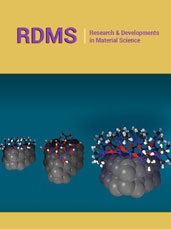
.jpg)





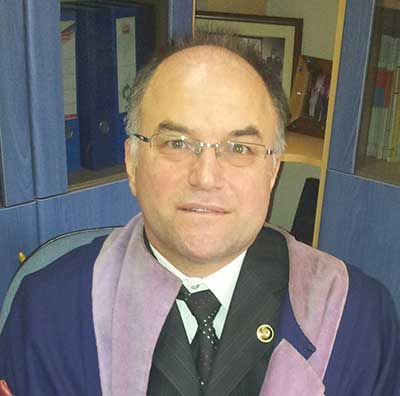
.jpg)














.bmp)
.jpg)
.png)
.jpg)

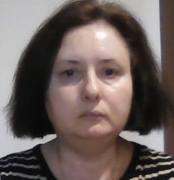








.jpg)






.png)

.png)



.png)






